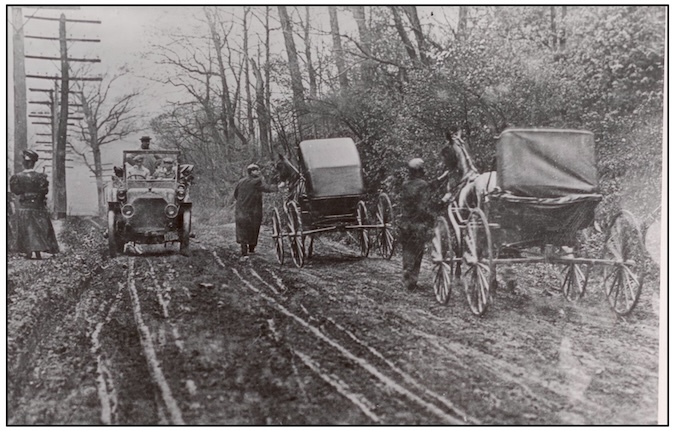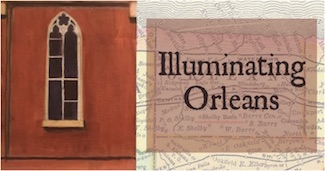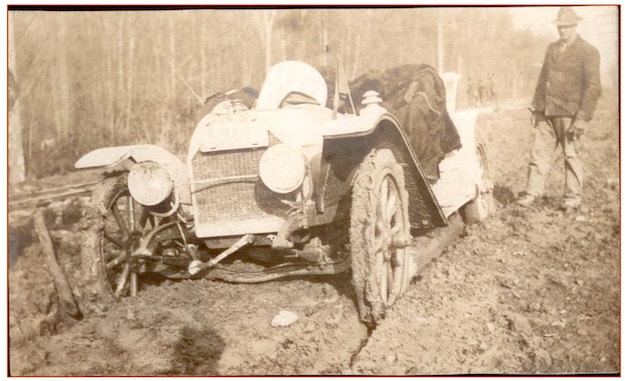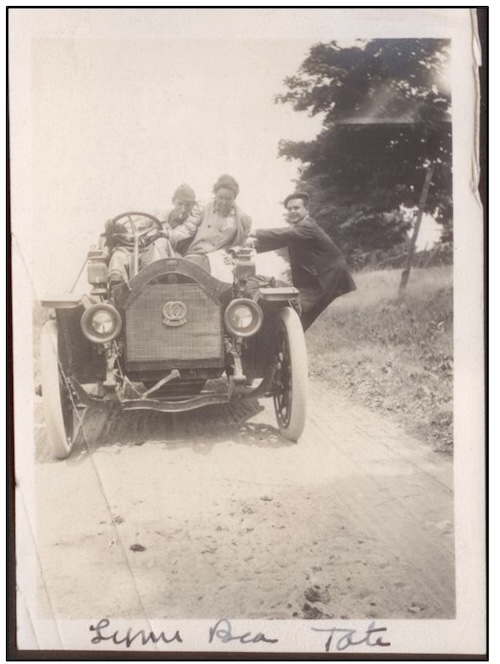The ‘Good Roads Movement’ in 1880s sought to improve muddy and rutted roadways

Photos from Orleans County Department of History Collection – “Transportation Options”
By Catherine Cooper, Orleans County Historian
“Illuminating Orleans” – Volume 5, No. 36

An automobile approaches. Spooked by this noisy charging machine, the horses have to be led by their drivers. This photograph perfectly captures the old and the new, that brief time when the pivot was tilting from the horse-drawn era to the age of electric power and automobiles.
Road conditions such as those photographed above and directly below led to the formation of the Good Roads Movement in the 1880s. Rural and suburban roads were mostly dirt: muddy and soft when it rained, dusty when dry.
The campaign to improve the roads was initiated by bicyclists who were enjoying the freedom of the roads for the first time. The advent of the automobile further highlighted the problem of muddy roads, as rutted roads damaged vehicles.

“Stuck in the Mud” Burrows Collection, Orleans County Dept. of History Collection
The Good Roads Movement was not without controversy. Who would be responsible for the cost of improving roads? In New York State, some people argued that infrastructure investment had focused too much on the canal and the railroads to the detriment of rural roads. Others argued that the canal and the railroads were far more efficient in transporting goods, so why bother with investing in roads?
Much of the debate focused on whether the condition of the roads impacted farmers. Proponents argued that farmers were socially isolated and hampered in getting access to markets.
Farmers resented the imposition of an extra tax. They also felt that the tax would be used to improve roads other than the roads they needed. This debate was aired in the newspapers right through the 1920s. The Lyndonville Enterprise, for example, ran regular columns of syndicated posts on Good Roads.
In New York State, the issue of payment for road improvements was first addressed by the Higbie-Armstrong* Good Roads Act of 1898 which established cost-sharing between municipalities, counties and the state for the construction of main roads.
The Federal Aid Road Act of 1916 provided matching federal funds for road paving conducted by the states and in 1921, the Federal Aid Highway Act provided funding for paving up to 7% of roads in each state.

Lynn & Bea Burrows on a happier motoring outing. (Burrows Collection)
*Senator William W. Armstrong, who co-sponsored the 1898 Good Roads legislation, spent his early years in Albion. Educated locally, he became a lawyer and was clerk of the Orleans County Board of Supervisors in 1886 and 1887. He later moved to Rochester where he was elected State Senator from 1899-1908. He died in 1944 and is buried in Mount Albion Cemetery.































































